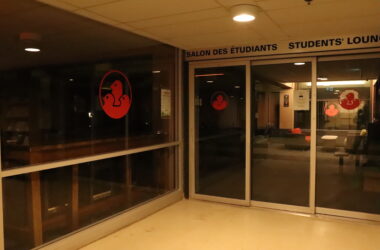The Fall 2019 Students’ Society of McGill University (SSMU) Referendum included a proposal written by the Indigenous Affairs Commissioner Tomas Jirousek to create a new Indigenous Equity Fund and Fee (IEFF). With a voter turnout of 17.3 per cent, the motion passed with 72 percent of students voting in favour. With the successful passing of the non–opt–outable $1.00 fee, The McGill Tribune spoke with Indigenous student leaders to explain the purpose and future of the new funds.
What inspired the IEFF?
Currently, many Indigenous organizations are registered as SSMU clubs, meaning that they have to submit a motion to the SSMU Funding Committee if they need money. Jirousek, who spearheaded the #ChangeTheName campaign, described how inconsistent funding hindered the initiative last year.
“Without a stable base of funding for the campaign, I was forced to make alternative arrangements [that] fell outside of my portfolio and the original campaign road-map,” Jirousek said. “I had originally wanted to bring in scholars to speak to the topic, but my inability to rely on steady funding from SSMU forced me to delay the launch of the campaign until I could secure outside funding and support, which eventually came from the Indigenous Studies program.”
What will the fund be used for?
The new fee funds Indigenous student groups and initiatives on campus, providing then with financial autonomy from SSMU, as well as an opportunity to hire more personnel dedicated towards support activism efforts. During the #ChangeTheName campaign, a significant amount of work fell on a few student volunteers. According to Catie Galbraith, co-chair of Indigenous Student Alliance, a stable fund that carries over unused capital every semester allows for more dedicated positions. This includes a position investigating McGill’s progress on the Provost’s Taskforce on Indigenous Studies and Indigenous Education’s 52 calls to action for support and reconciliation from McGill’s administration on Indigenous issues.
“We will create a couple [of] new [paid] positions under the Indigenous Affairs portfolio,” Galbraith said. “There would be a campaign and events manager and then a researcher who would follow up on the 51 calls to action that the Provost made. Their job would be to keep McGill accountable to those [calls to action].”
Indigenous student groups outside the SSMU system could also apply for funding from the Indigenous Equity Fund. Joel Grant, President of McGill Students’ Chapter of American Indian Science and Engineering Society (ASIES), a club promoting Science, Technology, Engineering, and Mathematics (STEM) careers for Indigenous students, explains how this fund will support their operations.
“The Equity Fee would allow our Indigenous students to have access to a fund for Indigenous STEM initiatives,” Grant said. “It is important [that] McGill continues to have representation and involvement in the expansion of AISES within Canada [….] Our current approach to funding is [not feasible] and often involves us trying to raise our funds as a student group and generating some sponsorship from the university. The Equity Fund would be a long-term solution that would be reliable.”
What are the first steps for the new funds?
Jirousek stressed that the IEFF will be first used to make sure that vulnerable Indigenous students are provided with the resources and support they need.
“The very first thing we will do is make sure that the most vulnerable Indigenous students are taken care of,” Jirousek said. “I’ve already began working with vice-president Finance Sam Haward to ensure that an Indigenous-controlled [funding] structure is up and running for the beginning of next semester, which will provide immediate support [for] at-risk Indigenous students.”
In the next year, SSMU Indigenous Affairs and other Indigenous student groups will use their expanded funding to take on new projects.
“I’ve begun the process of planning an academic conference for next semester,” Jirousek said. “This will provide a platform for academics and activists like our confirmed keynote speaker Professor Cindy Blackstock. This event is particularly exciting as we are planning to bring onto campus Indigenous vendors, Indigenous caterers, and an Indigenous art exhibition.”








